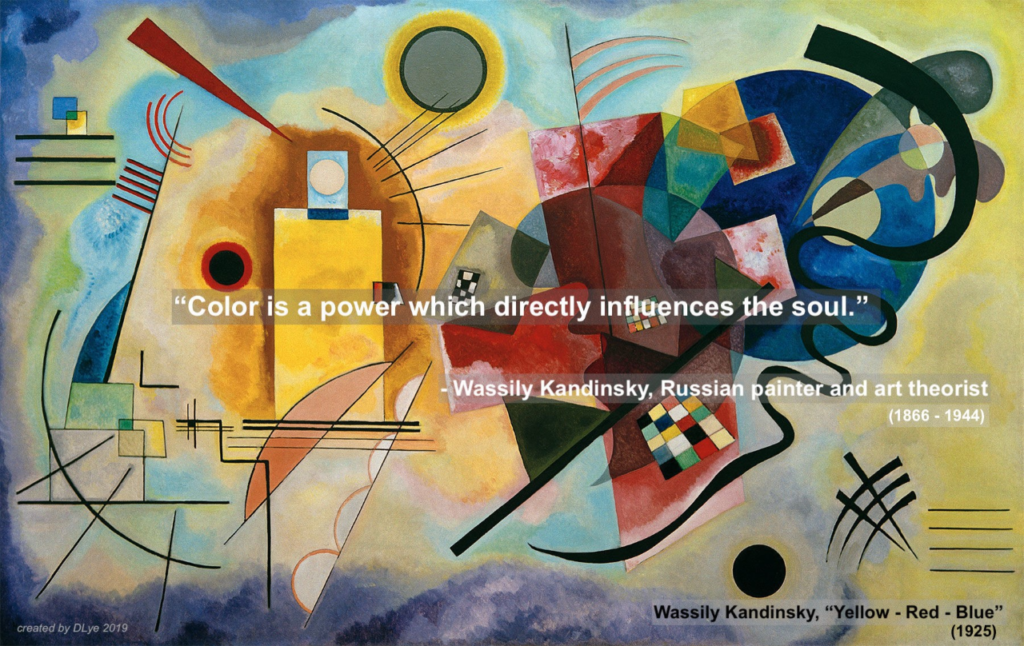
Russian Red. 999. Ruby Woo. Pioneer. Androgyny. No. 1.
What do these words call to mind?
Beauty product enthusiasts the world over will recognize these iconic shade names currently inhabiting their purse. (The author tips her hat to the product developers and marketers at Dior, MAC, L’Oreal, Chanel, and Jeffree Star.)
At the risk of taking the technology for granted, what went into creating the iconic colors?
Accidental experiments, bold defiance, an enterprising mind, good taste, shrewd manufacturing, and hours of color matching in the product development laboratories.
A Short History Lesson: Accidental Chemistry Makes Mauve
In 1856 over Easter vacation, 18-year-old William Perkin set out to isolate quinine from coal tar. Perkin was student of great German organic chemist August Wilhelm von Hofmann at London’s Royal College of Chemistry. Quinine is a valuable compound with valued anti-malarial properties. However, any chemist who knows its chemical structure would not have attempted this approach. During Perkin’s time however, the structure of benzene was not even understood.

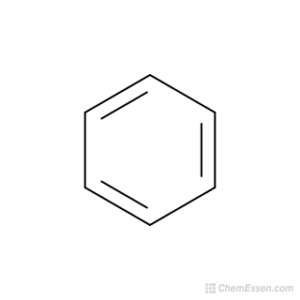
Chemical structure of quinine and benzene
Embarking on what some might call a fool’s errand, Perkin attempted to chemically isolate the compound. With an artist’s eye, he stumbled upon mauve instead, or “aniline purple”, through a series of serendipitous experiments.
Mere luck would not have been enough to produce entire libraries of color additives manufactured today. Against his professor’s recommendation –(proof that we should always make final judgement calls for ourselves rather than obey advice without discernment)– Perkin commercialized his discovery. With the financial support of his father, a construction contractor, he developed the processes for the production and use of the new aniline purple dye. In 1857, Perkin opened his factory at Greenford Green near London. From modest beginnings, the synthetic dye industry and its relative, the pharmaceutical industry, was born.
Despite falling short of his original goal (R&D scientists and research leaders: take note!), Perkin discovered the world’s first synthetic dye, opening up an entire chemical industry and painting the mass markets with bedazzling color.
Each time we swivel up a beloved tube of lipstick for application, we pay homage to Perkin. Our ability to make style statements with color products was enabled entirely by Perkin’s accidental discovery in 1856, shrewd manufacturing, and business development.
Color Additives for the Consumer Packaged Goods Industry
Perhaps the most tightly regulated in the cosmetic industry, these ingredients play an important role in making products visually appealing for consumers. With the right product, it empowers the consumer to make artistic statements of her choice through color products, unencumbered.
Modern day color additives have come a long way since 1856, and safely used for more than 150 years. Color additives are used to liven up a product. As industrial research brought science into industry, the industrial colorist was a profession that developed alongside industrial design after World War I. American designers and artists worked together on the design of tasteful and attractive goods to promote culture and civility to a nation that had become overwhelmed with unsophisticated immigrants from largely rural regions of southern and eastern Europe.
For manufacturers, the mass production of different colored goods posed other challenges. The need to predict which colored products would be attractive to the masses required market research, upkeep with Parisian fashion trends, and an understanding of consumer psychology. After World War II, the epicenter of mass market fashion moved to New York, where consumers exercised -and still very much do today- the power of choice over color for self-expression.
In broader contexts in business, color is used to liven a brand or company through its logo, to create instantaneous product recognition, set the visual tone and impression, or even influence consumer psychology. As such, judicious choice and use of color in products, advertisements, and on live consumer lips and faces, can pose as effective marketing campaign strategy to increase a company’s awareness and presence in the marketplace.
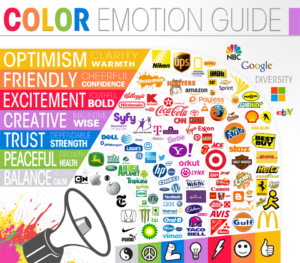
Judicious use of color even in a company logo can make a difference to a company’s brand, by igniting consumer emotion. Image source: https://www.fastcompany.com/3028378/what-your-logos-color-says-about-your-company-infographic
Technology Advancements Empowers the Consumer as Artist
Since the advent of brands like Urban Decay from the 1990s, bold colors have emerged on the cosmetic market, like a relentless catwalk and lightshow of color. Greens, blues, the blackest black, pinkest pink, and everything unicorn, iridescent, pearlescent, glow-in-the-dark, and in-between have become mainstays of any cosmetic product line aiming to market itself as exciting and cutting-edge.
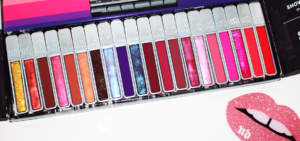
Image source: www.urbandecay.com
Owing to technological advancements, consumers no longer have to choose between long-lastingness, comfort, payoff, or value. Oftentimes, a large palette of color options accost her, with the option of layering more than one color over her lips, eyelids, lashes, or face, to achieve her desired shade and look.
Less is More?
Presented with the sleuth of options, studies on the paradox of choice by Professors Barry Schwartz and Sheena Iyengar come to mind. While more isn’t always better, in the world of cosmetic products and beauty trends today, more DOES mean more. The wide array of color options delights the beauty consumer.
Today, this consumer is as complex in skin tone, gender, political association, and values, and expects her beauty products to reflect her multidimensional nuanced identity just as effectively. Variety in color and shade options (particularly in skin-matching tones for foundations) have been in long-time demand. Consumers asked, and beauty companies have listened.
The market today has made progress since the era of limited shade range housed in drugstore-branded compacts, where nary a tester was in sight for the consumer to choose a shade that matched her skin tone. “Nude” can mean many different shades. Brands such as Beauty Bakerie were founded upon this very premise of inclusion, turning shade names upon its head. Where brands used to start shade naming from light to dark, Beauty Bakerie makes it a point to call its darkest shade, “1”.
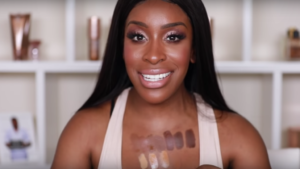
Jackie Aina, influencer known for pushing companies towards shade diversity and racial inclusivity. She demonstrates Too Faced’s pigmented emulsion foundation product in a range of new shades. Image source: https://www.glamour.com/story/jackie-aina-too-faced
Advent of Color via the Chemical Industry, Social Media, and Business
The evolution of consumer tastes tracks the ubiquitous use of social media and the rise of the beauty blogger voice,, both of which continue to drive demand volumes and trends today. Continued delivery of chemical and formulation innovation is what enables the fashionistas’ envelope-pushing on what is considered wearable and trendy. Contrapuntal to the international beauty companies’ main-stream product development approach, the rise of indie brands and the use of direct selling (e.g. Glossier) have sprung up to fill market whitespaces from the supply side. From the formulator’s standpoint, innovation has liberated what is possible in performance and payoff to meet the ever-growing consumer demands for “new”. Consumer force and industry innovation, very much lubricated by social media, has progressed hand in hand dramatically in the last decade.
The consumer voice has gained a significant amount of power in the beauty and consumer products industry today. The onslaught of small beauty brands has forced larger beauty conglomerates to innovate, push daring and imaginative color products, or buy up these small brands in an effort to be more competitive.
Development of technology by material suppliers continues to facilitate the creative explosion of color products. Raw ingredient suppliers in Europe, Asia, and the Americas push the boundaries of surface functionalization, particle, colloidal, material and formulation development, designing polymers and optimizing production capabilities to enable supply and production of novel raw ingredients. The advancement of technology and manufacture production has put high-performing value products directly into the consumers’ hands, democratizing beauty and lowering the cost of self-expression.
With the glut of products and trends, it remains to be seen where the push-pull conversation between consumer and company will take us. It is an exciting time to observe how raw ingredient suppliers and product development companies big and small will respond to market forces.
References
[1] https://www.sciencehistory.org/historical-profile/william-henry-perkin
[2] Rydzewski, R. M., Real World Drug Discovery
[3] https://www.sciencehistory.org/distillations/magazine/colors-run-riot
[5] https://www.fastcompany.com/3028378/what-your-logos-color-says-about-your-company-infographic
[6] https://hbr.org/2006/06/more-isnt-always-better
[7] https://www.glamour.com/story/jackie-aina-too-faced
[10] https://www.huffingtonpost.co.uk/sophie-bianchi/beauty-bloggers-zoella_b_11566248.html
[12] https://www.wsj.com/articles/glossier-tops-billion-dollar-valuation-with-latest-funding-11552993200
About the Author

Dr. Diane Lye cut her scientific teeth by working on the design, synthesis, and bulk property characterization of supramolecular block copolymers. She has authored multiple academic publications and developed a market commercialization assessment for a dermal technology. She was lead scientist in a lean ad-hoc team in turning around two global product lines under duress, and developed pigmented dermal products for commercialization. She contributes articles in her spare time. A musician in a previous life, she enjoys using it as a vehicle to reach out to and educate young minds.
